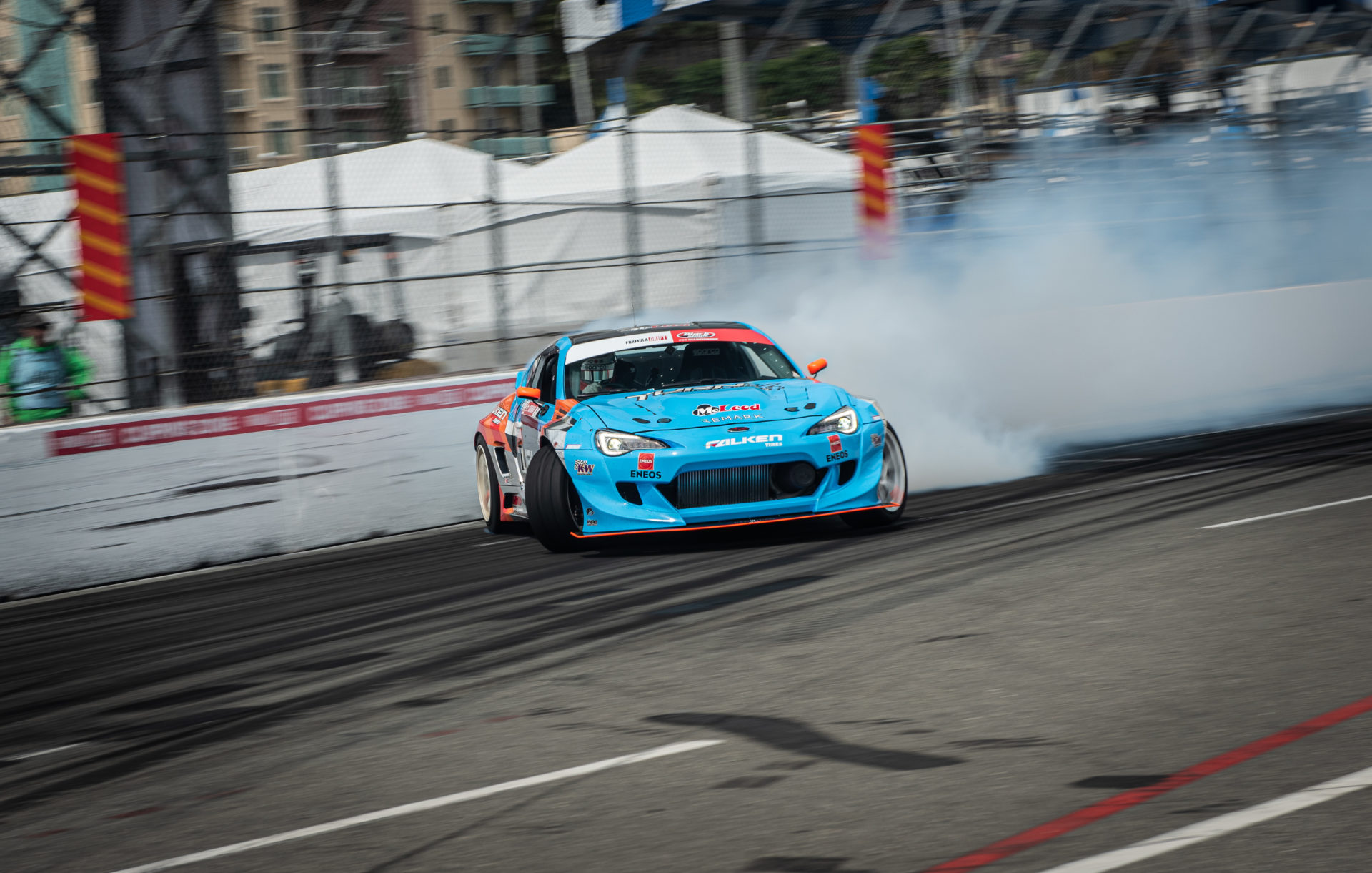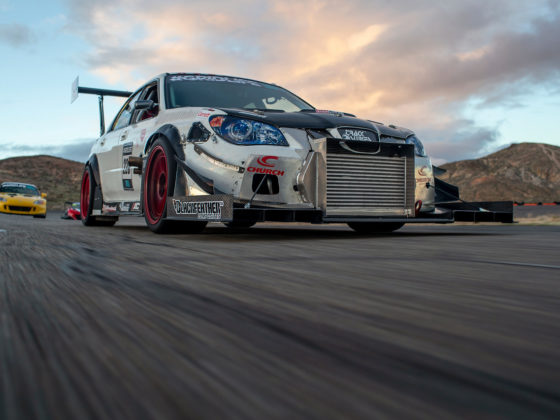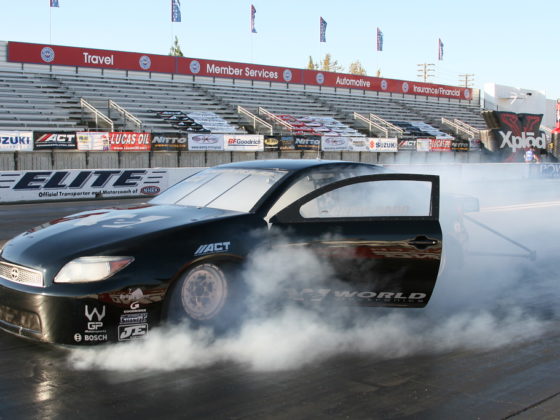
As you can see in all the rod bearings, the wear is pretty evenly distributed across the bearing. A lot of performance bearings run higher crush clearances to resist spinning on the rod. This causes minor distortion of the bore dimensions and clearances which leaves a distinct wear pattern on the bearings. King bearings use their Radial Lock crush design that results in less bearing bore distortion and more even wear.

The main bearings exhibit more wear and show some unusual wear patterns, especially when this engine was machined and assembled taking great care to get the clearances perfect. Still, the engine was functioning perfectly and the bearings don’t show signs of distress, just wear.

The thrust main bearing shows the most wear. The dry film coating was worn mostly through on the lower half which is subjected to the most compressive load from the turbocharged cylinder pressure. The thrust bearing, being in the middle of the crank maybe be subjected to the greatest amount of flex in the crank due to load harmonics.
Although the dry film lubricant coating is mostly worn off, the bearing surface shows no sign of pitting, cracking or smearing, evidence of the crank touching hard or the load bearing capacity being exceeded. The crank journal was in perfect shape with no wear or scratching at all.

This is one of the rear main bearings, the bottom bearing shows more wear but the wear is limited to the coating and the zinc flash layer underneath. Like the thrust bearing, this crank journal was perfect with no wear or scratching at all. No pitting, cracking or smearing was present so the bearings load capacity was not exceeded.

Some of the bearings had an uneven side to side wear pattern as well as top to bottom. We suspect that the heavily loaded, high RPM spun for the long stroke crank would flex in bending and torsion causing the uneven wear. Stroker cranks have less journal overlap and tend to be a little less stiff, even top of the line billet cranks like the ones we use. We suspect this because the cranks journals and the block measured out perfectly.




15 comments
I’m calling block flex the main culprit here! This looks like flex in the direction of the crank, with the front haf twisting in the opposite direction compared to the other side. Since its a blok thats part of the main structure, it’ll probably be torquing itself.
Most likely time for a stiffer block!
A stiffer block like an LSX would be nice but these cars have to handle well too and that’s another 80 lbs on the nose that I don’t want to have. Since we have exceptional reliability and low maintenance, perhaps the best of any team in the series, I will put up with bearing replacement once a season!
80 lbs is a shit ton of weight! Wouldn’t it be possible to make a rigid frame where it can be bolted to? In essence both banks are trying to extend the V outward. So a front and back lower mount, and preferably 2 mounts all across the heads? Lower mounts are the most efficient though. And if you really would like to test if you need the upper mounts: Use some thin aluminum sheet and rivet it to the frame. If your using studs, attach the other side to the head bolts. You can see how much deflection there is by looking at the ripples after a run. You could in essence use paper, as long as you re-enforce the places where you attach it to the engine and frame. Or just place a camera under the bonnet (or run without a bonnet during testing and just slow motion the footage? By then you have at least confirmation that flex is the problem. Although I highly doubt it is anything else.
As for flex in itself: I actually like flex for the most part: I kind of look at it as a pressure relief switch: I’d rather have flex then breaking stuff!
None of that would be legal under the rules. The engine is doing exceptionally well and this engine just happened to be run a long time so I can live with the wear which is still exceptional.
I cant blame you for it! If it works within reasonable you might as well leave it!
EDIT:
Had to look up the engine bay: Would it be possible to use to “strut braces over the engine? And if so, make then bolt down in stead of welded, so you can still remove them if neccesary? From there on out extendtubes front and rear to the sides of engine and bolt them down. make the top tubes as rigid as possible (because you don’t want to warp the struts, which I think will happen if your not carefull) and use thinner tube that bolts to engine. 16 bolts total = 2 per side per strutbracebrace, making 8 total. 2 per side per engine brace, making 8 total.
FD will not let us use any sort of auxiliary bracing forward of the firewall. Bolt on or not. We have been busted for this before too!
You could pass some tubes inside the hood structure, technically not bracing, easily removable, hide it under some a sheet of carbon and some heat reflecting tape… The 5/8″ steel hood pins might give it away though 🙂 Just thinking out loud here…
A rigid hood can be forced through the windshield in a crash and decapitate the driver. This is the reason why OEM hoods have buckle points and cowl retention hooks and slots. Many people used to get killed this way. The stressed member engine is legal and more effective and does not add any weight or complexity.
Another thing is that we like to be able to do quick engine swaps if needed. Our whole car is designed around being repairable and easy to maintain in between rounds and in the shop as well. In drifting once competition starts we are only allowed 5 minutes for repairs in total for the entire competition.
I thought as much about repair time. And I wouldn’t have anything less. Taking everything off just to get to one piece is a pain in the ass to say the least. But with 5 minutes every second counts, so it becomes a question of: “How many times do I take those 5 minutes, and can I risk it?” And since you have your feet on the ground over there, you are a way better judge at that then I am.
From other bearings I’ve seen, it appears WPC treatment seems to work better.
What do you think, Mike?
Well, remember that you are looking at wear over 3x the previous service internal and this is an older design of bearing.
Understood…but I’m guessing the same bearing design with WPC would show improved wear.
It would take off the black coating and I didn’t want to do that. I have done it with ACL and OEM bearings with good results.